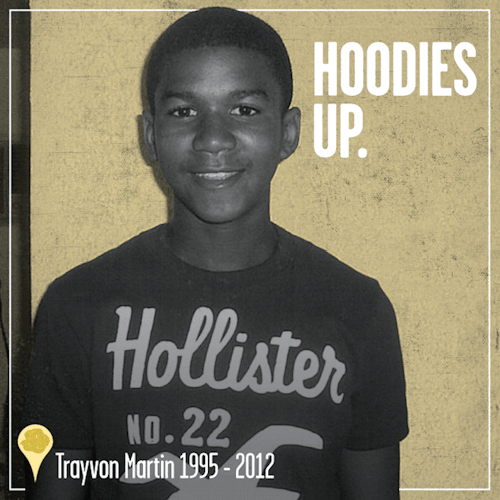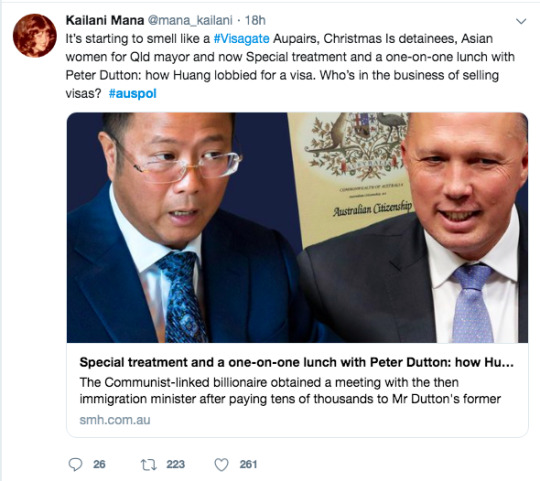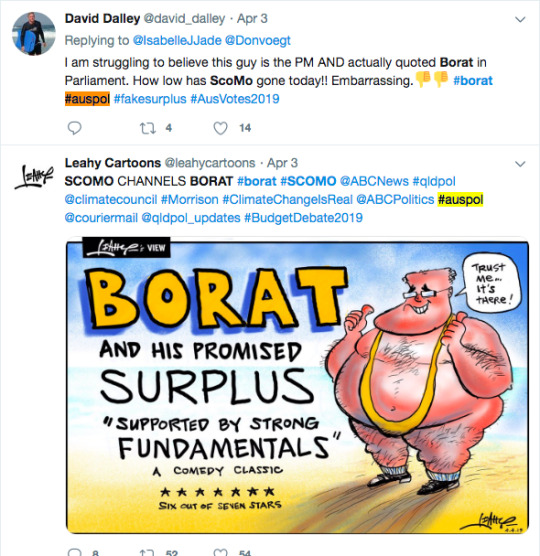Text
A hairy history
Off the top of my head, I could not name one person I know personally who does not have a social media account.
This is a single reason why social media plays a vital role for viral campaigns that are in the process of wider communication - it has the visibility of the world.
For Melbourne born campaign Movember Foundation, they strategically use social media as a stepping stone to address some of the biggest health issues faced by men: prostate cancer, testicular cancer, and mental health and suicide prevention.

Some facts about men’s health:
- On average, men die six years earlier than women.
- Prostate cancer rates will double in the next 15 years.
- Testicular cancer rates have already doubled in the last 50 years.
- Every minute, a man dies from suicide globally.
The term ‘Movember’ is a linguistic blend of words, or otherwise known as a portmanteau. The term combines both the words ‘moustache’ and ‘November’ which are both integral aspects in the campaign process.
The annual campaign challenges men globally to ditch the razor and grow a moustache for the month of November, thereby changing their appearance whilst changing the face of men’s health. They essentially become a walking and talking billboard and prompting questions. The ‘Mo Bros’ start the 30 day month with a clean-shaven face, through their efforts that raised both awareness and financial help for the often ignored issues of mens health.
The data graphs below explore the mention of the popular campaign terms ‘Movember’ and ‘No Shave November’ over the month leading up to November 2014 across all social media platforms. Due to the campaign including images for ‘photo evidence’, the expectation that the terms be mentioned on high visual channels such as Facebook, Instagram, Twitter and Flickr are high as they help increase visibility.


I can hear you asking… “wow, what happened on October 17?”
Nope, wasn’t Kim Kardashian... or a Donald Trump.. but Kian Lawley, a 19 year old social media influencer who has grown an impressive following through production of Youtube and Vine content. With over 2 million subscribers on Youtube and 1.71 million on both Twitter and Vine.
His tweet:
No Shave November is coming up & I can finally participate with the somewhat of a beard I can grow 😅
— KEY-YUHN! (@KianLawley) October 16, 2014
A single Tweet by Lawley generated more than 3,000 retweets and impressions in a single day (October 17) – shows just how social media can play a major role in the growth of a public health campaign.
Fast forward to 2019, the mention and opportunist tagging of the term Movember has found itself in over 1,312,426 Tweets and counting globally.
Australia
The trains, buses and trams across the country even got their own moustache to support the movement.

After losing his grandfather to Prostate Cancer, Eray Saban held his annual “Shit Shirt Saturday” raising over $31,000 by bringing Mo Bros and Sistas together for an afternoon of fun at the local pubs in their shittiest shirts.

United States
Movember partnered with the hilarious duo “Holmes & Watson” brought by Sony Pictures that hit cinemas in December to create a custom public service announcement that raises awareness for the campaign.
Canada
Canada? They never disappoint. Canada had a pop up barber in the heart of Toronto on November 1st to ensure the Canadian faces were starting the month cleanly shaven.
United Kingdom
The popular reality show star Chris Hughes from Love Island UK got his nuts out on national TV as he underwent a testicular cancer examination to eliminate any of the worries or myths men had about getting checked.

Social media may be criticised, but it is bloody powerful.
#movember#noshavenovember#movemberfoundation#Kian Lawley#Chris Hughes#Mda20009#cancerawareness#prostate cancer#testicular cancer#suicide awareness
0 notes
Text
Leveraging Crowds For Good
Claudia Coll, remember the name.
Claudia Coll was a friend of mine who’s presence could light up a room. A living form of sunshine - people naturally gravitated towards her.

Claudia was born in September 2000 and found out 6 weeks later that she was diagnosed with Cystic Fibrosis, a disease which attacks the respiratory (lungs) and digestive system. Now at the age of 18, there is still no cure for this disease.
Claudia’s health quickly deteriorated after picking up a deadly bug called Burkholderia cepacia or otherwise known as B. cepacia, a pathogen which causes immunodeficiency and pneumonia in people living with cystic fibrosis. It is believed she picked it up from dirt or mud as a child. The bug is particularly dangerous to cystic fibrosis patients due to their already weakened immune system. Meaning she can no longer be around her brother, who also shares the debilitating disease.

One of the crowdsourcing major forms is crowdfunding, a practice of ‘funding a project or venture by raising small amounts of money from a large number of people, typically the public, and typically via the internet’. Some online fundraising sites include: Kickstarter, GoFundMe, IndieGoGo, GoGetFunding, CircleUp etc and all share a common goal of raising capital through the collective efforts of the public.
Whilst Claudia fought hard throughout her 18 years of life, her health rapidly deteriorated in late April this year with her long function dropping below 30%. When things didn’t improve, Claudia was moved to the Alfred Hospital where she underwent a lung transplant. Claudia passed away peacefully on the 3rd of May 2019 surrounded by family.
A Go Fund Me page was set up by a close family friend to crowdsource funding in order to aid in paying for Claudia’s ongoing care and to help support the family and soften the financial indent whilst they kept a bedside vigil for Claudia in hospital. GoFundMe is an innovative crowdfunding platform that was founded in 2010, allowing anyone to form fundraising campaigns for initiatives that are important to them. The concept is supported by sourced of leveraging crowds of donors.

The Go Fund Me fund raised $50,000 in five days the crowdsourcing platform. To this day, the fund has raised $79,000 for the Coll family, by 936 kind individuals in just under a month.
The online fund for the Coll family is a successful representation of how crowdfunding can be a positive reach for worthy causes. Thanks to crowdfunding and sites like GoFundMe, Claudia’s father Peter was able to take time off work to be by his daughter.
0 notes
Text
Not the ones from folktales
No, not the supernatural creature of Scandinavian folklore. Not the tall and brutish mythical humanoid creature said to possess great regenerative powers. The ones who, usually anonymously, sit behind a digital screen and post deliberately provocative messages or posts on online platforms with the goal of causing maximum disruption and disturbance. Online trolls and the supernatural type both share the same goals, their actions are generally thought to be originated from evil and malevolent intents. Whilst the supernatural type feast on human flesh, online trolls feast on human disturbance and commotion.

The association between the use of the Internet and a negative social impact has been documented for some time. A 1998 study by researchers from Carnegie Mellon University found that increased use of the Internet was associated with statistically significant declines in social involvement and increases in loneliness.
According to Pew Research Centre, more than a third of us participate in online debates and 41% of people have been personally subjected to harassment online. Norway born documentarist photographer and film maker Kyrre Lien was intrigued by the world and motives of ‘internet trolls’ and has since spent the last three years meeting and interviewing some of the most strongly opinionated and active ‘internet trolls’ across the globe – some including trump supporters, racists, misogynists, socialists and homophobes etc.
youtube
From the fields of Norway, to the U.S desert and an apartment in Lebanon, Lien finds those who spend their time debating online on the subjects they care most strongly about. He delves deep into the unanswered questions for why some have the need to express their anger online, and why so many of them choose to harass and threaten people whilst stretching the freedom of speech to its limits.



Lien’s project ‘Meet The Internet Warriors’ allows viewers to meet the ‘warriors’ in their own cave – photographing them in their ‘safe space’, most being that at home in front of the computer in order to prove they don’t behave in the same way when offline.
‘He has met the men who generally are a bit older and turn the comments section into a masculine arena, and the women, who more often choose Facebook – a much younger arena’
0 notes
Text
Trayvon Martin, remember the name.
Social movements are significantly shaped by the technology readily available at the current time.
We have rapidly moved from the 1960’s era where in times of crisis, you would head straight for the telephone. Individuals would call major national civil rights organisations in order to privately report news and events, raise concern or send support for current political engagement and activism. News would be delayed, and when it became news for the next morning, the ‘news’ would then be considered old. The civil rights worker would be on the other end of the phone ready to take down your news or concern which would then be followed up and reported. After being cleared for authenticity and legitimacy, the report and news would then be mailed out to organisation leaders, the media, the Justice Department, lawyers and anyone else interested or affiliated with the movement. Juxtaposed to current day, where we as citizens turn to an instant and public platform like Twitter to undertake and execute similar actions and behaviours where authenticity is questioned. Twitter is undoubtedly beneficial in this day and age with its critical mass of active users and ability to ‘retweet’, allowing efficient redistribution. With it’s feed being time ordered, you know you’re staying up to date.

Hashtag activism is when large numbers of posts are linked on social media under a common hash tagged word, phrase or sentence with a social or political claim. Hashtags allow for a quick creation of impromptu communities and discussions around a topic.
The hashtag #BlackLivesMatter has become an emblem for modern racial injustices. After the fatal shooting of Trayvon Martin in the summer of 2013, Alicia Garza, a Californian labor organiser responded on Facebook to the acquittal of George Zimmerman, the man who gunned down Martin, as a response to the anti-Black racism that permeates our society and movements.

Originally posted by sonsandbrothers
Since then, the hashtag has become a relatively consistent presence on social media for the black community, organisations and fellow activists to publicly press for change and call for action - and has since become a organisation. The Black Lives Matter Global Network is a ‘chapter-based, member-led organisation whose mission is to build local power and to intervene in violence inflicted on Black communities by the state and vigilantes’.The Black Lives Matter movement has found successful amplification through social media, with the hashtag being used over nearly 30 million times on Twitter alone - an average of 17,000 times a day. The engagement of the hashtag spikes majorly when in response to a current major news or events, most notably news and discussion about fatal encounters between law enforcement and black Americans - as seen in the graph below.

#BlackLivesMatter quickly became a symbol in our mainstream media, with the hashtag appearing in American hit drama series, Law & Order SVU which aided in the exposure of the movement.
Whilst hashtag activism typically arises from a profound yearning to support a worthy cause, the exercise has its detractors, including those who debate its legitimacy to be considered a social movement. Some people see activism using hashtags as just a stepping stone in a lengthy and extensive journey, often typecast as ‘frivolous symbols’ used by millennials. The term ‘slacktivism’ was defined by the United Nations as people that “support a cause by performing simple measures” that “are not truly engaged or devoted to making a change.” (United Nations, 2011). The action of hashtag activism has faced a multitude of allegations which argue that individuals associated with hashtag activism movements are superficial and narcissistic. However, the success of the #BlackLivesMatter campaign lies in its ability to balance both digital and physical campaigning in order to fight injustice.
Technology, specifically social media, will undoubtedly enhance the effectiveness of any activism campaign – yet the success of a activism campaign lies in the physical commitment.
#Trayvon Martin#blacklivesmatter#BLM#mda20009#activism#social media and activism#social media activism#slacktivism#twitter
0 notes
Link
0 notes
Text
Politics and Social Media: #Auspol
The somewhat infamous hashtag, #Auspol, is the digital hub for all things Australian politics. Where all the politically engaged and wary individuals vested in Australian politics network together and perform political participation and communication. The hashtag is among one of the most profound and used in the world. Boasting over a million tweets on the global platform Twitter and may be described as a ’technology of engagement’, a tangible, material tool for people to relate to themselves and to others. Often crude, often not for the faint hearted and sometimes described as a ‘bloodbath’, the hashtag rated third among trending political topics on twitter in 2015 and was the only Australian trend to make it into the global top 30 trends, a year-end analysis of what or who was talked about the most on social media platforms.
Short for Australian politics, #auspol is often used for rumour spreading and commentary for both citizens and members of parliament to voice their opinion and has quickly become a ‘part of the political furniture in Australia’, a virtual object that contributes to the unfolding of social and political reality on a daily basis. The hashtag originated from America where it actually began as a compound word for Austin Politics, '(Aus)tin (Pol)tics’. Australia quickly took over the compound hashtag in 2010, which took off after two independent members of parliament, Tony Windsor and Rob Oakeshott announced they would be joining with the then prime minister Julia Gillard to allow the Labor Party to form a minority government on September 7th. On September 7th, 241 tweets were sent using the hashtag #Auspol, with 1,500+ tweets on the days following. Now, the hashtag is mentioned 9,000+ posts a day, which grows or is influenced dependent on political disruption and day to day political events.
This weeks most talked about topics and issue/s via #Auspol:
Malcolm Turnbull is calling for Peter Dutton to explain himself, following reports that a Chinese billionaire, who was seeking a passport, paid a Liberal lobbyist tens of thousands of dollars to secure a private meeting with the then Immigration Minister.

Prime Minister Scott Morrison has used $600,000+ of taxpayers money on advertising for the election.

Australian Prime Minister Scott Morrison did a Borat impression during Parliament.

#Auspol#Malcolm Turnball#Scott Morrison#Australian Politics#Australian#Politics#mda20009#digital communities
1 note
·
View note
Text
Is Tumblr a blog or a Social Network site?
It is arguably incorrect to label Tumblr a blog or a social network site as it is considerably dependent on the individuals intention and motivation for using the website. Tumblr gives the consumer the option of using it as a social network site, for blogging or used collectively.
But what really is Tumblrs actual purpose?
Our first step in exploring whether Tumblr is a blog or a social media is to find the characteristics and purpose of both:
The key purpose of a social network is ultimately to connect and network with a large group of individuals who are friends or followers. However, the content you share publicly on your social network may not exclusively be for your friends and followers. Your shared content will not always be in relation to them. A social network is a platform you share with a large group of individuals.
On the other hand, a blog is more specific in the content that is being shared. A blog is your own platform. Your hub. Ultimately you will create a following or collect visitors who specifically view your blog for unambiguous content relevant to them.
The answer? Tumblr is collectively a social networking site for micro-blogging.
Tumblr possesses the qualities similar to that of a social network through the idea that not all content you post to the ‘dashboard' may be exclusive for all your followers and friends. However, like a blog, you are able to create and identify with your own blog or website, where followers or visitors will come to view specifically your content - whether that be through tags, outside internet searches, regular viewers or just casually stumbled across. Tumblr is not as personalised as the likes of similar social networks such as Facebook, Twitter and Instagram due to the freedom and ability to create without having to ‘network’. Content posted on Tumblr however can be lost on the dashboard just as quickly as the content posted on the mentioned social sites.

1 note
·
View note